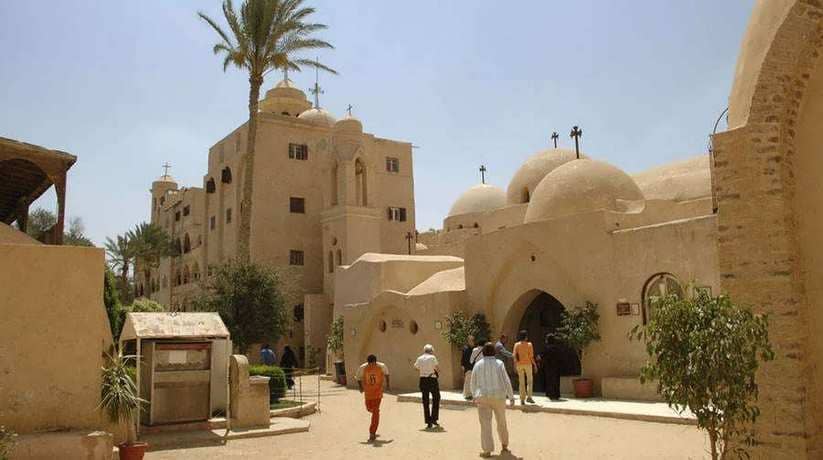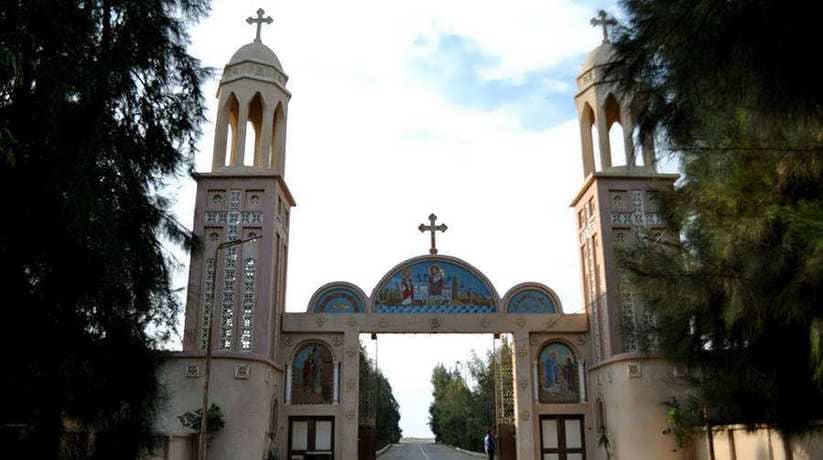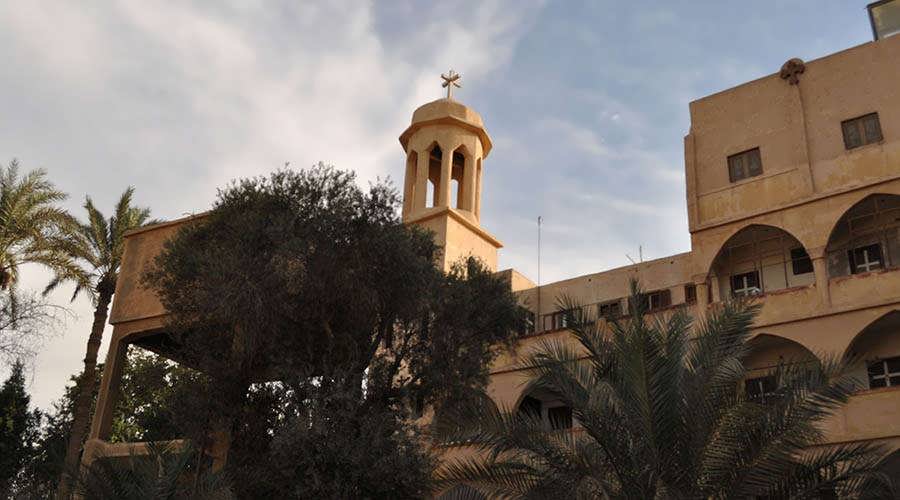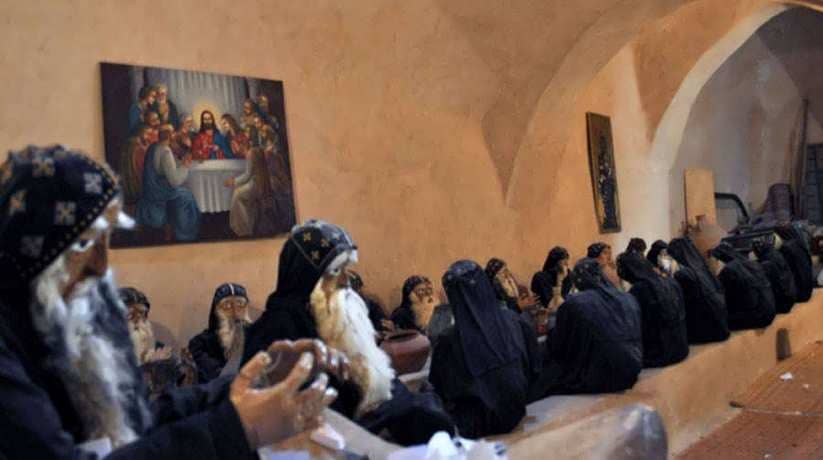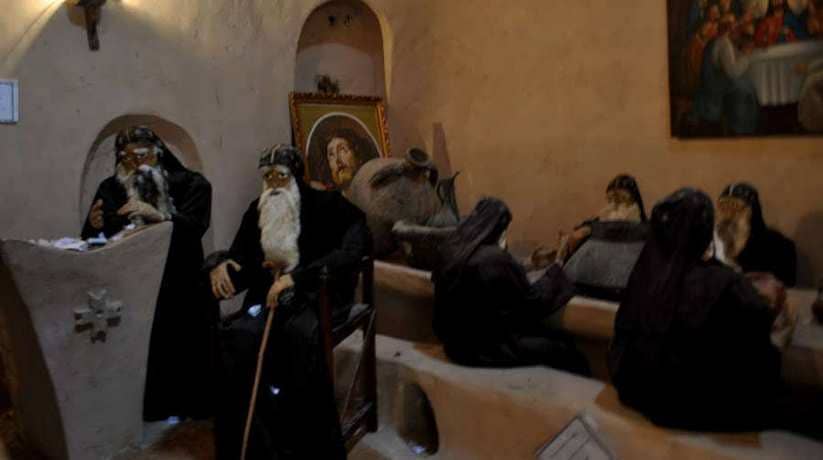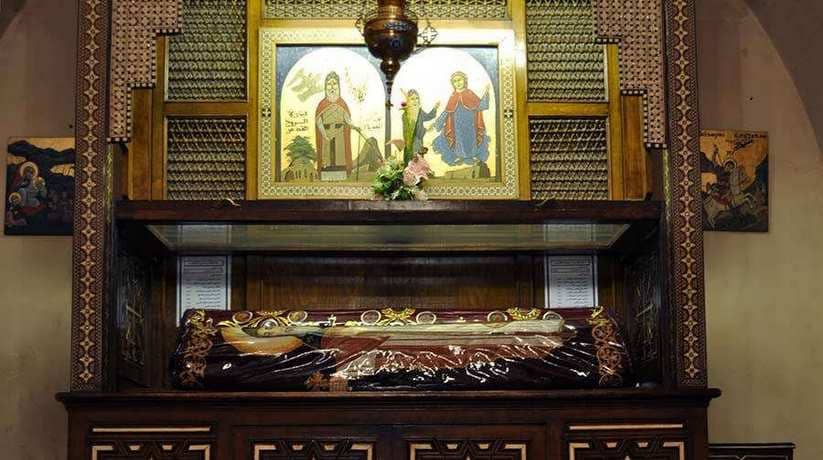Suryan Monastery Egypt information, tours, prices, booking
Suryan monastery Egypt is one of the four monasteries which well known in Wadi El Natrun, Egypt. In fact, it also know as Syrian monastery, Al Sourian monastery and Deir al-Sorian. The monastery founded in the sixth century, though some might date it later. Moreover, it is about five hundred meters northwest of St. Bishoi monastery. In 550 there was approach to Julianist which owes its name to its principal exponent Julian. He was a theologian and bishop of Halicarnassus (Halicarnarsus) in Ionia. Furthermore, he also called Aphtartodocetism. Julian exiled to Egypt. He defined the doctrine of the incorruptibility of Christ’s body. Julianist is believing in an extreme view. It is that the body of the Jesus Christ was incapable of corruption. They held that Christ’s body united with the Holy Father.
Christ took human flesh which prevented him from being ideal. Thus, the Orthodox Church reaffirmed and clarified the idea of the real human nature of Christ. The majority of the monks became followers of Aphtartodocetism. Others who refused the doctrine obtained permission from the governor Aristomachus. It was to erect new churches and Monasteries. So, they could settle apart from the Julianists. In fact, Suryan Monastery established by those of St. Bishoi monastery who were against Julianist doctrines. The problems between the Orthodox Christians and the Julianists died out. It was in the beginning of the eighth century. And then, there was no longer any necessity to maintain two distinct Monasteries.
Further details about Deir al-Sourian Egypt:
They settled in Al Fustat in Old Cairo. Acertain Marutha from Takrit in eastern Syria converted it for use by Syrian monks. Moreover, they renamed it the Monastery of the Holy Virgin of the Suryan. Some manuscripts refer to it as the Monastery of the Mother of God of the Suryan at that point. In fact, there were Syrian monks at Wadi El Natrun since the end of the fourth century. They were living among the other monks. Perhaps, the Syrian wished to live in a monastic community. It would be ethnically and culturally homogeneous. All Monasteries in the Wadi El Natrun subjected to horrible attacks by desert tribes.
Berbers in 817 AD was particularly disastrous to Suryan Monastery. In 850, it rebuilt thanks primarily to the persistent labor of two monks, Matthew and Abraham. Moses of Nisibis (c. 907-943 AD) traveled to Syria and Mesopotamia in search of manuscripts. Moreover, he spent three years gathering material. He returned to Egypt bringing with him 250 Syrian manuscripts. The monastery became an a prosperous and important facility. In fact, it has many artistic treasures and a library rich in Syrian texts. The monastery became a fundamental source of history and culture of Syria.
More details about El Suryan monastery Egypt:
The onastery walls enclose an unusual plan. It is in relationship to others in the Wadi El Natrun. They are form an almost rectangular quadrilateral. Moreover, they are with the short sides measuring 36 meters at one end and 54 meters at the other. The two longer sides measure some 160 meters. Furthermore, the height of the walls varies between nine and a half and eleven and a half meters. The monks explain this abnormal plan in an unlikely way. According to them, the monastery built on a model of Noah’s ark. These walls most likely date to the end of the ninth century. The entrance to the El Suryan monastery located at the west end of the northern side of this enclosure wall. The mammoth keep (qasr) situated west of the north entrance to Syrian monastery.
We believe it built in the middle of the ninth century. At any rate it built after the enclosure walls. In fact, it belongs to a less well developed type of tower. It is of which the oldest examples may found at Kellia. It consists of four stories, with access granted by a wooden drawbridge to the second floor. The bottom floor used for storage of food supplied. It also was for the production of flour, oil and wine to assure supplies during a siege. To further insure the complete autonomy during times of trouble, there was also a water well. The second floor used to house the precious library of manuscripts. They that surrendered. Some of the niches that once held the manuscripts are still visible. The third story consists of a corridor with four vaulted rooms to one side and two on the other.
Further details about Suryan Monastery Egypt:
Moreover, the fourth floor of the keep reserved as a chapel dedicated to the Archangel Michael. Here, one finds a nave and a choir separated by the traditional wooden screen. The sanctuary surmounted by a brick cupola supported by four pendentives. Furthermore, the Church of the Holy Virgin inside Suryan monastery is ancient. It dates back to 645 (though some references date it as about 950 AD). It constructed in the basilica style with a wooden roof.
This church has an entrance on its north side through a court. The court is square and surmounted by a cupola. Moreover, it opens into the monastery courtyard. The main building of church divided between the nave, the khurus and the triple sanctuary. The nave completely roofed with a barrel vault and flanked by two small side aisles. Furthermore, there is a masonry balustrade somewhat over one meter in height. It divides the nave into two sections.
The Chapel of the Forty Nine Martyrs in Suryan Monastery Egypt:
Attached to the north side of the Church of the Holy Virgin is the Chapel of the Forty Nine Martyrs. Moses of Nisibis was also responsible for this building. It entered through the court at the north entrance of this church. Moreover, in 444, forty nine martyrs massacred during a bloody raid. It was by the Berbers who plundered the Monasteries of Wadi El Natrun. In fact, it is to them that the chapel dedicated. Buried within the chapel is Anba Christodulus. He was the abun of Ethiopia at the beginning of the seventeenth century. Recent restorations have also revealed ancient paintings in this chapel.
In fact, the eastern wall of the sanctuary has three niches. They surrounded by the rich, decorative stucco work. It is like to that one in the central sanctuary of the Church of the Holy Virgin, revealed several scenes. In the central niche is a scene of the Holy Virgin holding Christ before her. The niche to the right adorned by a standing figure. It is with a Syriac inscription identifying him as “St. Mark the Evangelist”. Though the figure in the left niche not identified by text, he might be the Patriarch Athanasius. A similar composition found in the old Church of St. Antony (monastery) at the Red Sea. These paintings are newer than the tenth century stucco decorations that surround them. Dedicated to the Holy Virgin, this structure dates back to the ninth century.
Further details about Suryan Monastery Egypt:
It also made up of a naos, khurus and triple sanctuary. They maybe built in the fourteenth or fifteenth century. Moreover, the nave entered through a portico on the south side. The entrance level is three steps lower than the present grounds of Suryan monastery courtyard. There are three more steps that connect this portico with the nave of the church. Contrary to other Coptic Churches, the nave is transverse in relationship to the main east west axis. This is a characteristic feature of Churches in Mesopotamia.
In fact, it has a barrel vaulted roof. It divided into three bays by arches resting on consoles, another Mesopotamian feature. In the west end within the floor the marble laggan (also called a lakan). There is a central large door and two smaller side doors that lead into the choir. The central door is of inlaid woodwork and dated back to the fourteenth or fifteenth centuries. The choir is also rectangular and transverse in relation to the principal axis. It likewise has a barrel vaulted roof which divided into three parts. The iconostasis is screen separating the choir from the sanctuary. It made of dark, inlaid wood and dates from the fifteenth century.
The Church of St. Honnos and Marutha in Suryan Monastery:
This church, which no longer in use, attached to the east wall of the Church of St. Mary. It dates back to the beginning of the fifteenth century. In this period, the monks from the ruined monastery of St. John Kama took refuge in this monastery. St. John Kama, who’s remains transferred here, associated with this monastery. Saint John Kama was a native of Jebromounonson (Shubra Manethou) in the district of Sais. At an early age he forced into marriage. He persuaded his wife to consent to a life of virginity. Furthermore, he permit him to live the life of a monk. He inspired by a vision to enter the Wadi El Natrun. It is where he became a disciple of Saint Teroti. He inhabited a cell in the vicinity of the Monastery of Saint Macarius.
The Church of St. John the Little in Suryan Monastery:
In fact, the ruins of the Church dedicated to St. John the Little. They stand in the northeast corner of the monastery enclosure wall. Ethiopian monks occupied this church after their own monastery had fallen into ruins. Moreover, Ethiopian monks lived in the monastic communities of Scetis in the twelfth century. At one time occupied a monastery dedicated to St. Elisha. After the monastery fell into ruins, they received by the monks of Holy Virgin of St. John the Little monastery. Furthermore, the monastery also abandoned because of its precarious state. Few remaining Ethiopian monks then welcomed by the monks in the monastery.
The Refectory at Suryan Monastery Egypt:
West of the Church of the Holy Virgin is the ancient refectory, which is no longer in use. It is rectangular with a masonry table running down its axis. This table flanked by chairs that are also of masonry. The room roofed with a vast cupola in which small windows opened to admit illumination. Near the east wall of the refectory is a large stone pulpit. It is from which the sacred texts raid and the saints’ lives revealed during the common meal. Above Suryan monastery grounds are, of course, other buildings of various uses.
The cells of the monks and gardens occupy the eastern and southern parts of the monastery grounds. A water tower built between 1955 and 1956 in the eastern part of Suryan monastery. It now provides it with running water. A guest house including a library and museum built by Qummus Maksimus Salib in 1914. It replaced during the 1960s with extra cells, a special library building and a museum. Today, this library contains over three thousand volumes including several hundred valuable manuscripts.

